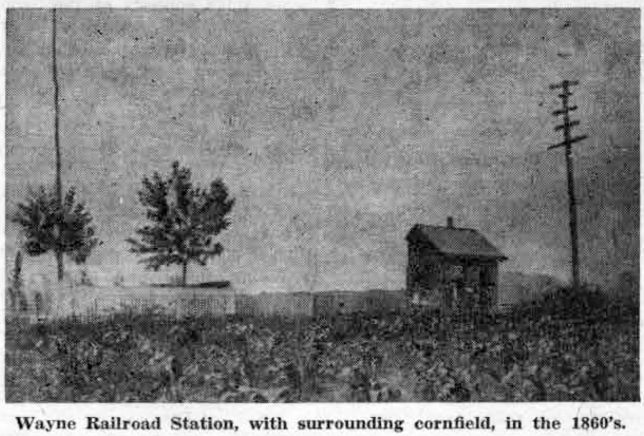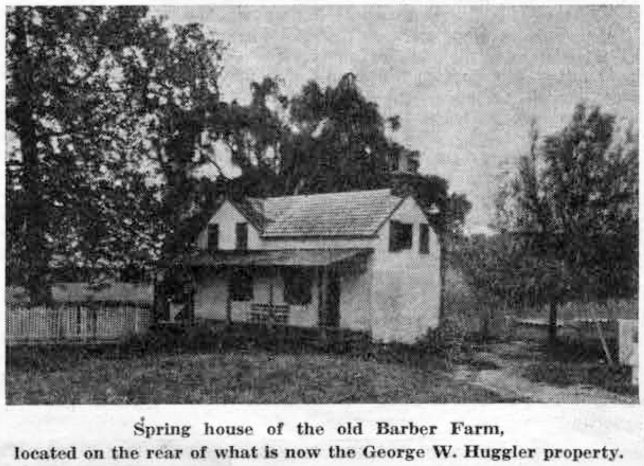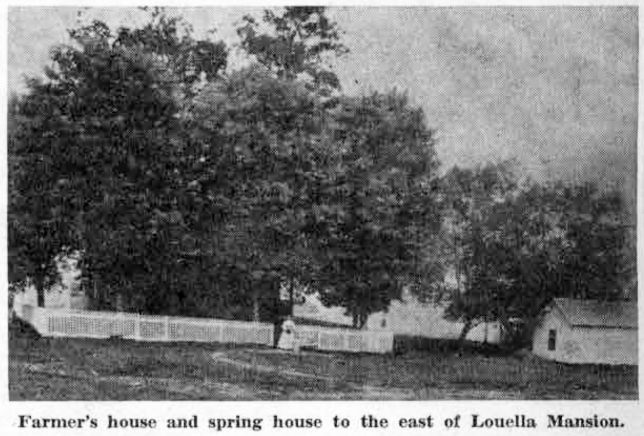From the book of priceless old pictures which Herman P. Lengel has lent to the Radnor Historical Society, and from which pictures for this column have been reproduced from time to time, the first one shown in the book is that of the railroad station. In the 1860’s, the station provided the first view of Wayne for most newcomers.
 The small edifice shown in the picture above might be called the third station, in point of time. The first was a large, square wooden pillar, laid on its side, where passengers sat while they waited to flag the train. The second was an old wagon bed.
The small edifice shown in the picture above might be called the third station, in point of time. The first was a large, square wooden pillar, laid on its side, where passengers sat while they waited to flag the train. The second was an old wagon bed.
In those days Wayne was called “Cleaver’s Gate” or “Cleaver’s Landing,” since trains stopped there to pick up milk from the Cleaver Farm. This farm was situated on a large acreage of which the Caley Nursing Home, on Lancaster avenue, is now the approximate center. The name, “Cleaver’s Gate,” gave way to that of “Louella,” which in turn became “Wayne.”
By the middle 1860’s, when Mr. Askin was building his Louella Mansion in the middle of his farm lands on the old Lancaster Highway, the present Pennsylvania Railroad had built double tracks along its Main Line. In Wayne the tracks ran somewhat to the south of the present road bed.
Joseph M. Fronefleld, Jr., father of J. M. Fronefleld, 3d, wrote in some of his reminiscences of Wayne as he knew it in the 1880’s, that “Hall lane led directly to the station from the intersection of Conestoga road and West Wayne avenue.” Hall lane was so called because it started from Radnor Hall, a small place where public meetings were held, located on the site of the recently demolished First Baptist Church, at Conestoga road and West Wayne avenue. It “went in a northeasterly direction from the old church… passed over the ground where LaDow’s Drug Store (now Sun Ray Drug Store) and Lienhardt’s Bakery stand, crossed Lancaster pike diagonally, passed over the ground upon which the Presbyterian Church now stands and terminated at the station. The station was close to the point where the back of the Waynewood Hotel (now The Wayne House) stands.” Your columnist has often thought that this is the explanation of the fact that the front of the Presbyterian Chapel is not on a line with either the pike or the Presbyterian Church. When it was built, it undoubtedly faced on Hall lane.
After the Wayne Presbyterian Church acquired possession of the former Wayne Hotel, the frame building pictured above was demolished. Standing to the rear of the hotel, it had for some years been used as sleeping quarters for servants of the hotel.
And so passed into oblivion one of Wayne’s old landmarks, its first real railroad station.
In the table of contents of the old book is the information that this picture is the “Penna’s R.R. Station – Wayne – at the 14-mile stone – with adjoining cottage, the latter now being the residence of Mrs. Jane Kissick, whose late husband, John Kissick, and Fred’k Graeff were engineers of the old Centre Square Water Works, as well as of the present works at Fairmount, Philadelphia.”
At any rate, tradition has it that for many, years the approach to Wayne’s railroad station, with its adjoining cottage, was through a large cornfield!
 The other two pictures illustrated in today’s column show spring houses located along the Lancaster pike in the 1860’s, the first (above) being located to the east of Louella Mansion and on the same side of the highway. Although no description is given in the old book, both the residence in the center of the picture and the spring house to the right were, undoubtedly, the property of Mr. Askin. The former was probably the picture of the home of one of the farmers, with the farmer’s wife standing at the gate of the neat picket fence, with the large milk can in front of her.
The other two pictures illustrated in today’s column show spring houses located along the Lancaster pike in the 1860’s, the first (above) being located to the east of Louella Mansion and on the same side of the highway. Although no description is given in the old book, both the residence in the center of the picture and the spring house to the right were, undoubtedly, the property of Mr. Askin. The former was probably the picture of the home of one of the farmers, with the farmer’s wife standing at the gate of the neat picket fence, with the large milk can in front of her.
 The spring house at left was across the pike from its farm house, since the latter is identified in the table of contents as the large house on the north side of the pike which is now the home of Walter B. Lister. The Barber farm house was later the Presbyterian parsonage, and still later, the home of the Lofland family. A subsequent note on this picture places the spring house as being located in the rear of what was for many years the W.A. Nichols home. Located on the south side of the 400 block of Lancaster pike, this house is now occupied by the George W. Huggler family.
The spring house at left was across the pike from its farm house, since the latter is identified in the table of contents as the large house on the north side of the pike which is now the home of Walter B. Lister. The Barber farm house was later the Presbyterian parsonage, and still later, the home of the Lofland family. A subsequent note on this picture places the spring house as being located in the rear of what was for many years the W.A. Nichols home. Located on the south side of the 400 block of Lancaster pike, this house is now occupied by the George W. Huggler family.
